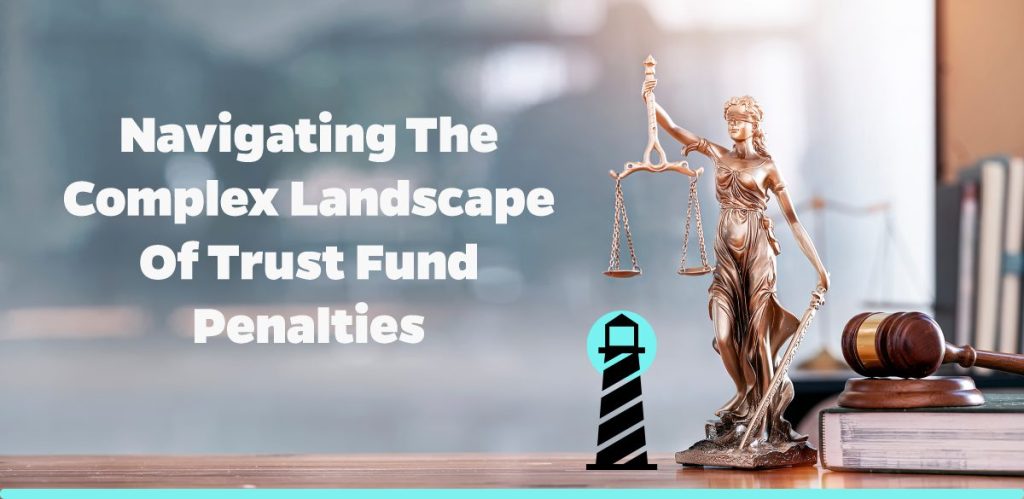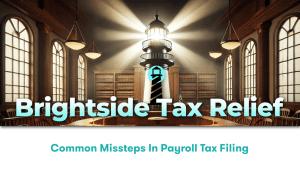Navigating the Complex Landscape of Trust Fund Penalty
In the dynamic world of finance and taxes, comprehending the intricate details of various regulations can be challenging. Among these complex specialties, understanding the Trust Fund Recovery Penalty (TFRP) or Trust Fund Penalty is no exception. As Brightside Tax Relief LLC, a nationwide tax relief firm that specializes in tax resolution service, we aim to lay out the complicated aspects related to the Trust Fund Penalty to help you – the taxpayers, comprehend it and navigate the landscape with clarity.
Decoding the Trust Fund Penalty
At a glance, a Trust Fund Penalty occurs when a trustee, which could be a business or an individual, fails to pay income tax withheld from an employee’s wages. This is the penalty charged by the IRS for failure to remit these trust fund taxes to the government. The Internal Revenue Service (IRS) is very stringent about this due to the nature of the trust fund tax – as the name suggests, the collected tax is held in trust for the government and is ultimately meant to go to the government.
Who can attract a Trust Fund Penalty?
It’s crucial to understand that the Trust Fund Penalty is not limited merely to business owners. The IRS can charge anyone responsible for collecting, accounting, and paying these funds or even those who decide what bills to pay and when to pay. This range can encompass people in various roles like corporate officers, directors, shareholders, other employees, certain third-party payers, and sometimes, even volunteer board members of tax-exempt organizations. Read more on IRS
Fundamentals of Trust Fund Penalty
The basic structure of the Trust Fund Penalty is constituted by two key sections:
• Assessment Process: This involves determining the responsible individuals who willfully failed to pay the trust fund tax.
• Penalty calculation: The penalty is typically equal to the total amount of tax not collected or not accounted for and not paid to the IRS.
Risk factors and prevention of Trust Fund Penalty
There are several risks associated with the Trust Fund Penalty that one needs to be aware of. These include business closure for non-compliance, personal lawsuits, and severe financial penalties. One key measure to prevent these could be setting up separate bank accounts for payroll taxes and operating costs. This can help businesses ensure they have enough money for IRS quarterly payments. It is also prudent to document financial decisions and keep complete payroll records to maintain transparency for the IRS.
Coping Strategies for Trust Fund Penalty
When facing a Trust Fund Penalty, it is important to take calculated steps to mitigate the damage. Here are some strategies:
• Take immediate action: Addressing the issue early can prevent the IRS from initiating severe actions such as levying bank accounts or repercussions on the business
• Consult a tax professional: Getting expert advice from a tax relief company like Brightside Tax Relief LLC can help you make informed decisions about settlement options
• Negotiate a payment plan: This could involve setting up an installment agreement with the IRS to pay the penalty over time
Why Trust a Professional?
As we cross the complexities of the Trust Fund Penalty, it becomes evident that navigating this landscape requires expert advice. This is where a tax relief company like Brightside Tax Relief LLC comes into play. Our extensive experience and professional expertise assure a deep understanding of tax laws and a meticulous handling of your trust funds. As our client, you can focus on your business knowing that your tax matters are in safe hands.
In conclusion, understanding the Trust Fund Penalty is crucial, whether you are a small business owner, an employee responsible for financial decisions, or even a third-party coming under the tax umbrella. Engaging professional assistance to navigate this labyrinth adds a layer of confidence and assurance, offering valuable peace of mind. Trust Fund Penalty can indeed be complex but with the right partner by your side, it can be managed seamlessly.




